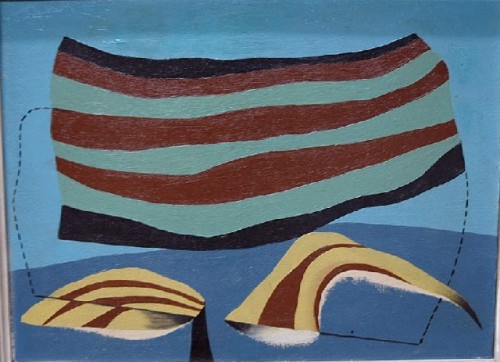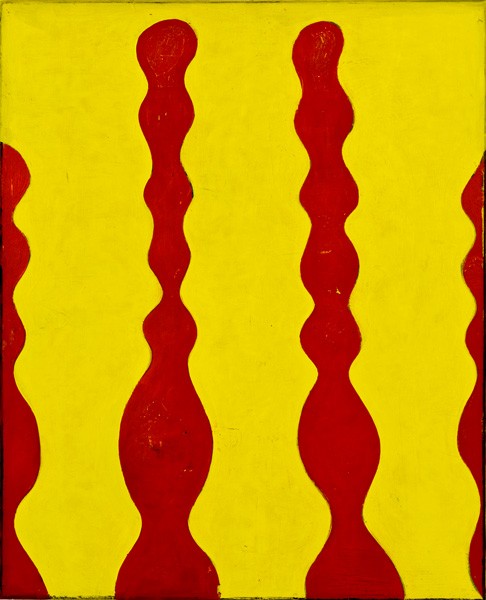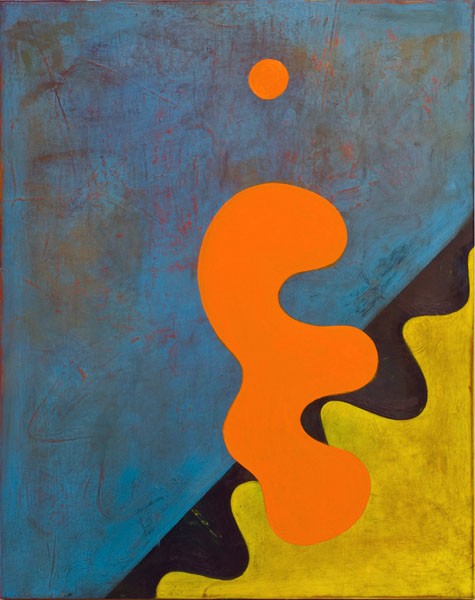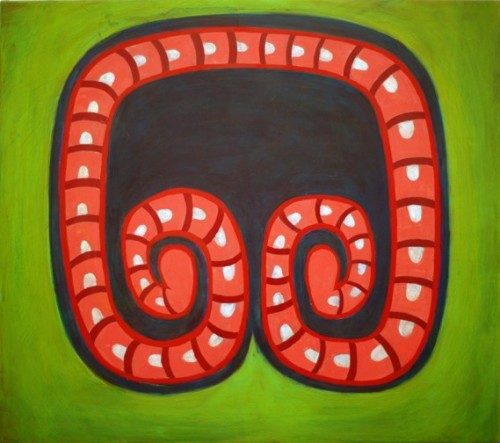Color and Form: The Language of Abstract Art
Berkshire Museum Exhibition Through November 1
By: Ariel Petrova - Jun 13, 2009
The American abstract art movement, culminating in the early 20th century, was considered a new chapter in American art history. This revolutionary period will be on display at the Berkshire Museum from June 13 to Nov. 1. The exhibit, Color and Form: The Language of Abstract Art, is curated by author, professor, and art historian Hellmut Wohl, and includes works from the Museum's A.E. Gallatin collection and features donated pieces from contemporary artists such as Tom O'Neil and Chuck Webster.
"This exhibit showcases our extensive and unique abstract art collection donated to the museum by Mr. Gallatin in 1943," said Stuart Chase, executive director, Berkshire Museum. "It is quite an honor to be able to show this original and groundbreaking work to the public."
Albert Eugene Gallatin is a key figure in bringing abstract art to the United States. He believed modern art played a vital role in the evolution of American life and culture. From 1927 to 1942, he collected works from Picasso, Gris, Léger and many others for his Museum of Living Art at New York University. This collection, according to painter and art critic, George L.K. Morris, represented a new direction in American art. Morris wrote of the collection's "emphasis on structural fabric, an honesty of presentation and a sense of fresh discovery."
Once the museum closed in 1943, Gallatin donated over a dozen works of art to the Berkshire Museum's collection.
Prior to the advent of abstract art in the 20th century, a picture representing nothing more than colors and shapes was unheard of. In the late 19th century, artists such as Cézanne, Gauguin, and Van Gogh found themselves sloughing off conventional wisdom, accepted technique, and predictable subject matter. As a result, the artists found themselves painting in near isolation and searching for new means of expression.
This struggle led them to pay less attention to the subject and to concentrate more on the picture and painting itself, leading finally to abstract art, where the challenge is to create an expressive pictorial space while maintaining the picture plane's two dimensionality, according to curator Hellmut Wohl."Abstraction is a state of mind, it's not concrete and that's okay," said Chase of the A.E. Gallatin collection and accompanying contemporary artists. "These works represents a conscious step away from 20th century art, at a time when stepping out of the norms was not embraced as it is now."
A panel discussion will be held at Berkshire Museum on Thursday, October 1, at 7 p.m., with Hellmut Wohl, curator of Color and Form: The Language of Abstract Art, and exhibiting artists Chuck Webster and Tom O'Neil. They will discuss the curation of the exhibition and their own personal work. The presentation is free with Museum admission.
Exhibited Artists
Charles Thomas O'Neil
Charles Thomas O'Neil was born in New York City in 1966 and now lives and works in Stockbridge, Massachusetts. Like the artwork in the A.E. Gallatin collection, O'Neil's paintings are rendered with sharp, clean edges and clear colors; they are systems in which abstract figures are related to and interact with a ground that is an integral part of the painting's composition. O'Neil approaches the canvas as responsive rather than an inert surface. His manner of working is a fluid process, which he refers to as "push and pull," from which shapes and colors emerge in playful combinations and interactions.
Chuck Webster
Chuck Webster was born in Binghamton, New York, in 1970. After living and working in the Berkshires, he's since returned to Binghamton. His paintings consist of a single image centered on a uniformly colored ground that maintains a two-dimensional picture plane. As in the work of some 20th-century European artists there is a close relationship in his paintings between title and image. The picture's title is not merely an identification of its subject, but an integral part of the image. The images in Webster's pictures, whether they are flat shapes or have bodily presence, function like signs or emblems. Their titles do not precede the creation of the image, but emerge, or are suggested to the artist, as the image unfolds on the canvas. The form of the image is located either on or close to the picture surface, or is projected outward into the space of the viewer, a pictorial strategy that Webster inherited from American color-field painters of the 1960s, such as Kenneth Noland. Everything is clearly defined and evenly rendered with minimal variations of surface texture. However, Webster's pictures raise two questions: the relationship between word and image, and the location of the form of the image in relation to the ground of the picture and the space of the viewer.
George L.K. Morris
George L.K. Morris is the most versatile among the abstract artists in the A,E, Gallatin collection. The two works exhibited here show the range of his formal invention: one with an architectural structure anchored by girders of black bars, the other a system of curving, brightly colored, sliding planes.
Albert E. Gallatin
Born in Villanova, Pennsylvania in 1881, Gallatin was a lifelong admirer, collector and painter of all kinds of art. In 1921, Gallatin began his affair with modern art culminating in the opening of what was originally the Gallery of Living Art in 1927, which later became the Museum of Living Art, until its close during World War II in 1942.
Charles Shaw
Charles Shaw was born in New York in 1892. Together with Gallatin and Morris, he was one of the founding members in 1937 of American Abstract Artists. Shaw's work from 1837 to 1942, the group's most influential years, is notable for its boldly reductive compositions, formal austerity, and controlled geometric form.
Wolfgang Paalen
Wolfgang Paalen was born in Vienna in 1905. In the 1930s he lived and worked in Paris, where he was influenced by Surrealism. In 1939 he moved to Mexico, following a brief stay in New York. Gallatin acquired Visages planétaires in Paris in 1934. It is the only picture in the Gallatin collection with a title that raises the issue of the relation between word and image.
Esphyr Slobodkina
Esphyr Slobodkina was born in Siberia in 1908. She arrived in the United States in 1928 and joined the American Abstract Artists in 1937. Her work from that time is characterized by a fluidity of clear-cut shapes and loose spatial structure. Gallatin won this painting at a raffle to assist members of American Abstract Artists whose studios had been destroyed by a fire.
Charles Biederman
Charles Biederman was born in Cleveland, Ohio, in 1906. He lived and worked in New York from 1934 to 1942, during which time he was strongly influenced by Cubism. Throughout his career he sought to build a specifically American abstract art form, based on the foundations of European abstraction.
John Ferren
Born in Pendleton, Oregon, in 1905, Ferren moved to New York City in 1938, becoming one of the first American Abstract Artists. After nine years, he moved back to California, where he taught at UCLA and eventually became involved in the movie industry.
Rupert D. Turnbull
Rupert D. Turnbull was born in east Orange, New Jersey, in 1899. He turned to abstract art in 1930, and was featured in the Museum of Living Art. His life and career were cut short by a car accident during the Second World War, but his work influenced many future artists.
Berkshire Museum is located at 39 South Street on Route 7 in downtown Pittsfield. Berkshire Museum is open Monday through Saturday, 10 a.m. to 5 p.m., and Sundays, noon to 5 p.m. For more information, contact the Berkshire Museum at 413.443.7171, ext. 10, or frontdesk@ berkshiremuseum.o








